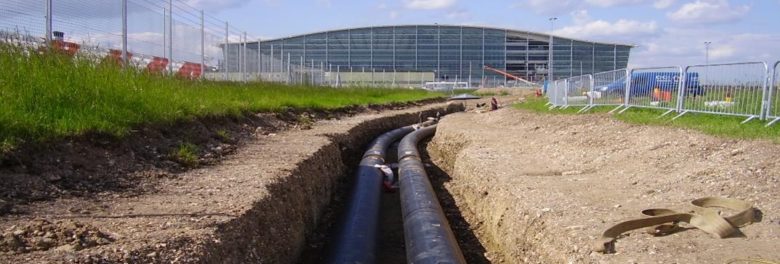
Part L 2021 places significant weight on heat network heat losses and will require design enhancements to meet carbon & primary energy requirements.
Part L 2013 allows a default Distribution Loss Factor (DLF) in SAP of 1.05 (i.e. 5%), which has always vastly under-accounted real heat losses. The new Part L offers three possibilities:
- Use a default DLF of 2 (50% losses):
-
- Extremely unlikely to achieve required CO2 & primary energy performance targets. Effectively not an option;
- Comply with CIBSE’s Heat Networks Code of Practice 2020 (CP1) – DLF 1.5 (33% losses):
-
- Whilst improving upon the above in terms of carbon performance, this still may not be sufficient where policies require exceeding minimum compliance with Building Regulations
- In terms of evidence, the SAP assessor would need a certificate or signed letter from the designer and commissioning engineer confirming the system’s compliance. It is not expected that the (expensive) full CP1 compliance process would be needed.
- Calculate the DLF:
-
- This would allow values of 1.25-1.4 (20-30% losses) to be achieved, thus providing the best carbon performance;
- However, there are risks associated with this option, particularly its implementation. It will be done by entering heat networks into the SAP Product Characteristics Database – the process of doing this is not yet finalised and has been under recent consultation. There are risks around how design performance may translate into operational performance and whether values may change accordingly over the lifespan of a phased development.
Option 3 clearly delivers the best carbon performance and would also result in the most efficient network, minimising heat bills. To achieve these results, design enhancements would be needed over conventional designs, going beyond the recommendations of CP1. This could mean:
- Eliminating oversizing and using smaller diameter pipework;
- Shorter pipework (which may need floor layouts to be rethought and introduce more risers per block);
- Thicker (or lower conductivity) thermal insulation;
- Lower operational temperatures (e.g. max 65oC flow); etc.
Posted on January 24th, 2022
Author: Igor Esteves
Related services: ESCO Tendering, Masterplanning & Strategy, Heat Network Performance Evaluation,